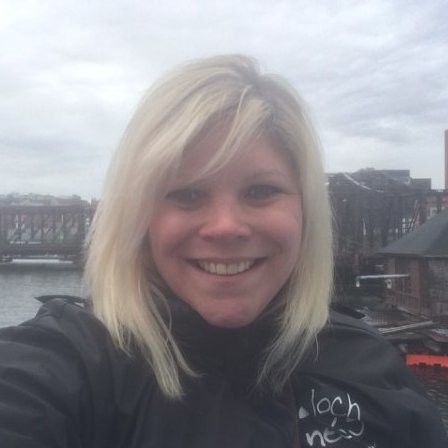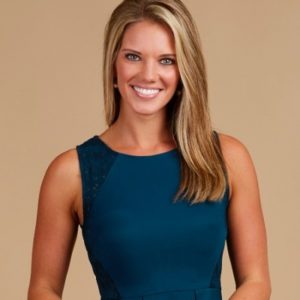Branding & Marketing: What Senior Living Can Learn From Other Industries
Marketing and branding tactics that can help set your senior care organization apart from your competition.
As both a consumer of senior health care services — for his mother and his father-in-law — and as the proprietor of a senior living-related company, Matt Perrin has a unique view into senior living facilities.
With his website Ro & Steve, named for the elder generation that he and his wife have worked hard to care for, Perrin has noticed certain themes across the industry.
A “Sea of Sameness”

Matt Perrin, publisher of Ro & Steve
“On the internet, senior living feels like just this big sea of sameness. No matter which site you’re on, it’s the same or similar stock image[s] and they all use the same jargon and buzzwords,” he says.
That sameness extends to in-person visits, Perrin says. “They’re all delivering the same sorts of messages in the same sort of time. It means well, but it’s all soft tones,” and it obscures what makes your community unique. It also makes it more difficult for people who might be perfect additions to your community to find you amid all the other places that look and feel the same.
How is the “right” resident ever supposed to connect with your facility when it looks like all the others? It can be a good idea to steal ideas and approaches from other industries.
The Account Executive Model
Perrin points to the idea of concierge support for products offered by certain industries. “It’s this notion of having a dedicated person or group of people focused solely on ensuring that residents live well and the families have a good experience,” he says.
It’s an idea that’s more applicable in some contexts than in others, but Perrin says having someone who fills an account executive-type role to oversee all aspects of a resident’s care could be the key to improving care and keeping families informed about how their loved one is doing.
“As my mother’s caregiver, I’m constantly connecting those dots between the dining staff, the wellness officer, the resident engagement crew,” and everyone else, he says. It can be a tall order, but if there were dedicated help to alleviate some of the pressure on the primary family caregiver, Perrin says that could turn him into a “brand evangelist” for the company overnight.
This is a lesson that can be learned from the world of enterprise software. “The service and sales and marketing functions are tightly woven together,” and there’s a dedicated account manager who responds to any and all requests from a specific client.
The Conversational Marketing Model
Perrin also notes that people’s attitudes toward the salesperson-customer relationship have changed. “In general, people don’t want to be sold,” Perrin says. “Whether you’re buying a new washer/dryer or a new stove or new tennis shoes, people don’t want to be sold. They want to be conversed with and have the opportunity to gather info and insight at their own pace and on their own terms.”
This so-called conversational marketing approach has its origins in business-to-business (B2B) industries, but business-to-consumer (B2C) companies are also employing it more frequently.
In terms of your business, moving to a conversational model might mean shifting from insisting on gathering email addresses (or worse, phone numbers) from prospective residents or their family members trying to access information on your site to making information more freely available.
Perrin notes that chat boxes, which are being more widely used across a variety of industries, are another good way to connect with prospective clients without being overly reliant on a traditional sales approach.
Using a chat box as a “first touch to the customer on your website” can help you start the interaction in a nonconfrontational way that puts the information gatherer at ease. Employing conversational marketing can help you keep beds and units full without irritating family members with a hard sale.
The Authentic Model
But the real need is to showcase what makes your community yours: the people. “What makes it unique is the people who are running it and working with the residents themselves. Here, authenticity is the key.
Perrin points to one of his favorite brands, Patagonia, which makes outdoor gear and clothing, as a good example of the authentic model. “I love their products, but I love what they stand for even more. In their case, they’re not just saying the right things, but they act on them at the corporate level.”
The company will actually forgo sales to benefit environmental causes, and Perrin sees some crossovers for the senior living industry. “I feel like senior living has some darn big causes,” and companies that align themselves with them may grab a bigger market share.
Customers Arrive with Expectations
People are accustomed to a certain level of customer service from their interactions with other industries. This will carry over to their interactions with your community. As a senior living owner or operator, look to see if you can embrace the following with your brand:
- Provide a personal touch. People like to work with people they know, like, and trust. Become that trusted partner for your residents and their families.
- Showcase your people. The people who make a community what it is are your biggest selling point. Make that clear to prospective residents and use low-key and passive marketing via social media outlets to further define your brand.
- Align with a cause. What’s important to you and your community? Connect with causes that show who you are and what you stand for and put your money where your cause is. That authentic embrace of what’s important to you will resonate with the right customers for your company.
- Sell by not selling. Let people gather information at their own pace with as little interreference as possible. A low-pressure approach often yields the most fruit.
Photo credit: “Learning is Hanging Out” by Alan Levine is licensed under CC BY 2.0.

Elaine K. Howley is a freelance journalist for various publications. An award-winning writer specializing in health, fitness, sports and history, her work has appeared in numerous print and online publications, including U.S. News, AARP.org, espnW, SWIMMER magazine and Atlas Obscura. She’s also a world-record holding marathon swimmer with a passion for animals and beer. Contact her via her website: elainekhowley.com.
Related Articles
Topics: Administration , Business Marketing Including Social Media and CRM , Executive Leadership , Featured Articles , Leadership , Technology & IT











